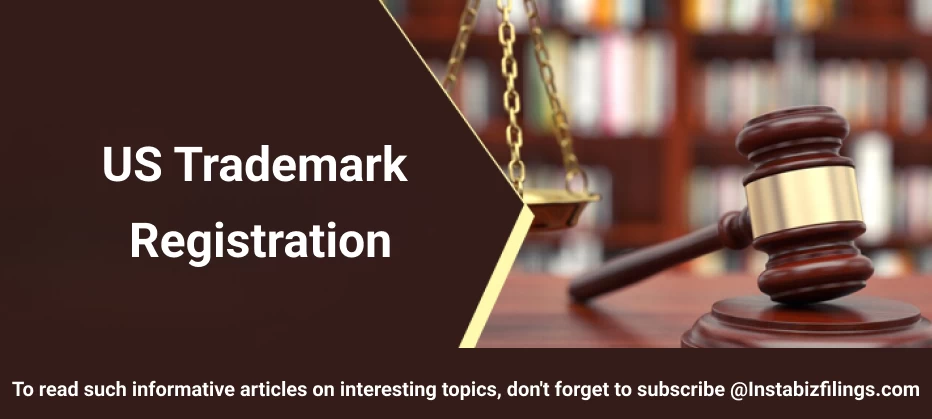
US Trademark Registration
October 9, 2025 by Team Instabizfilings
What is a Trademark in the US?
-
A trademark is a symbol, word, design, phrase or combination of words that identifies and differentiates the origin of the goods/services.
-
It gives the owner the unique right to use the mark in business, prevents confusion among consumers and makes the violation punishable.
-
Governed by the Lanham Act (U.S. Trademark Act), overseen by the United States Patent and Trademark Office (USPTO).
Key Legal Framework & Statutes
-
Trademark Act (Lanham Act), 15 U.S.C. §§ 1051-1127
-
The Code of Federal Regulations (CFR), Title 37, of the USPTO.
-
International filings under the Madrid Protocol.
-
The fee rules are regularly updated; major modifications were made on Jan 18, 2025.
What Has Changed in 2025 (Major Updates)
-
As of January 18, 2025, the USPTO updated many trademark fees.
-
Key change: TEAS Plus and TEAS Standard fee options have been eliminated. Now there is one base application fee for Sections 1 and 44.
-
Increased fees for maintenance (like renewals, declarations of use), petitions, letters of protest, etc.
-
Additional surcharges for incomplete applications, using custom descriptions of goods/services (not from USPTO’s ID Manual), or for very long descriptions.
Who Can File for a US Trademark
-
The person(s), corporations, foreign organisations, etc., which are utilising (or are planning to utilize) a mark in commerce with the U.S.
-
The address should be in the U.S. in case the domicile is not in the U.S., where applicants can be represented by a U.S.-licensed attorney.
-
Should not interfere with the registered marks or applications. Existing marks should be intensively searched beforehand.
Filing Basis / Types of Applications
You choose one of the filing bases under the USPTO system:
|
Basis |
What It Means |
|
Section 1(a) – Use in Commerce |
You are already using the mark in U.S. interstate commerce. You’ll need to provide a specimen showing actual use. |
|
Section 1(b) – Intent-to-Use |
You haven’t used the mark yet but intend to use it. You’ll need to later file statements of use or amendments when you start using it. |
|
Section 44(d)/44(e) |
Based on earlier foreign application or registration (from your home country), under treaty provisions. |
|
Section 66(a) |
Applications under the Madrid Protocol, designating the U.S. after filing an international application via WIPO. |
Step-by-Step Process to Register a Trademark in the US
-
Pre-Filing Search & Clearance
- Search Trademark Elastic Search System at USPTO.
- Register name marks, state marks, domain names, etc.
- Where possible, use USPTO ID Manual to describe goods/services to minimise chances of surcharges.
-
Decide Filing Basis (Use in commerce, Intent-to-use, Madrid, etc.)
-
Prepare Application
- Name of the applicant, entity type, nationality vs organisation data.
- Mark drawing and description
- Classes/identification of goods/services.
- Evidence or specimen of use in case of filing under use in commerce.
-
File with USPTO
- By means of the USPTO Trademark Centre (electronic filling).
- Pay the basic application fee, etc.
-
Examination by USPTO
- The reviewing attorney checks on conflicts, technical/legal compliance.
- In case of problems, issues receive an office action - reply within 6 months.
-
Publication in Official Gazette
- In case the examination is successful, the opposition is published (mark 30 days normally)
-
Registration
- In case of no opposition or opposition decided in your favour, the USPTO registers.
- Where Intent-to-use is used, including Statement of Use or Amendment to Allege Use etc.
-
Maintenance
- You must file maintenance documents to keep registration alive. (Between 5th & 6th year, declaration of use; at 10 years renewal, etc.)
Fees (2025 Fee Schedule Highlights)
|
Activity |
New Fee (2025) / Highlights |
|
Application (Sections 1 & 44), per class |
$350 base per class. |
|
Applications based on Madrid Protocol (Section 66(a)), per class |
$600 per class as of Feb 18, 2025. |
|
Insufficient information surcharge |
$100 per class. |
|
Custom Identification of Goods/Services surcharge |
$200 per class if you use a free-form description instead of using USPTO ID Manual. Plus $200 per 1,000 extra characters. |
|
Maintenance / Renewal |
|
|
• Section 8 Declaration (5-6 year maintenance) |
$325 per class (electronically) |
|
• Section 9 (10-year renewal) |
$325 per class |
|
• Section 15 Declaration of Incontestability |
$250 per class |
|
• Section 71 (for foreign registrations) |
$325 per class |
Timeline Estimates
-
After filing, the initial examination can take a few months (often 3-6 months), depending on the USPTO workload.
-
Registration can be made approximately 2-3 months post publication as long as everything goes smoothly once it is published.
-
Maintenance deadlines 5th-6th year, 10th-12th year etc.
Common Issues / Pitfalls to Watch Out For
-
Using vague or overly broad goods/services descriptions can lead to refusals or high surcharge fees.
-
Missing required information at filing (applicant info, address, proof of use) → office actions or refusals.
-
Not filing specimens of use or Statement of Use when required.
-
Missing maintenance filings → registration can be canceled.
-
Choosing wrong filing basis.
-
Not monitoring similar pending marks or domain names.
Strategic Tips for Applicants in 2025
-
description Use USPTO ID Manual to describe goods/services to avoid surcharge.
-
Be an early file, particularly where the fees are increasing (as in 2025) to save money / not have to pay several surcharges.
-
Monitor USPTO communications and deadlines carefully (office actions, oppositions).
-
With respect to foreign applicants, make certain that you hire a U.S.-licensed attorney, when necessary, particularly with respect to post-registration acts.
Post-Registration Maintenance
To maintain the registration, the following actions must be done:
-
Disclosure of use (Section 8) 5 th -6th year.
-
Renewal (Section 9) after every 10 th year.
-
Alternatively, Declaration of incontestability (Section 15) once 5 years of incessant use.
-
Keep address and owner information updated.
-
In case registration is done on the basis of Madrid (foreign) then there is a necessity of maintaining the underlying foreign registration.
-
Cancellation/Expiration through failure in compliance.
Cost vs Time vs Protection: Balancing Trade-Offs
|
Factor |
Faster / More Expensive Approach |
Slower / Cheaper but Riskier Approach |
|
Filing spec |
Use clear and pre-approved descriptions, handle everything properly to avoid surcharges. |
Using vague descriptions → risk refusals or objections. |
|
Filing basis |
File under “use in commerce” if already using, so less paperwork later. |
Intent-to-use basis adds cost & waiting time. |
|
Search and clearance |
Invest in thorough search → reduces risk of opposition. |
Skip or do minimal search → higher risk. |
|
Legal assistance |
Hire IP attorney for drafting & responding to office actions. |
DIY approach → might save cost initially but risk disputes. |
Why Register Federally vs State Trademark?
-
Nationwide protection is provided by federal registration (USPTO), Ⓜ / ®intage use, right to make litigation in Federal Courts, and recordation with Customs.
-
State registration is not only less expensive, but it is also faster, and is confined to the state; federal registration provides greater rights.
Costs Involved (Other than USPTO Fees)
-
Attorney / Trademark Agent fees
-
Search fees (USPTO + third-party search tools)
-
Specimen or marketing materials to show use
-
Possible fees for responding to Office Actions, oppositions, etc.
Conclusion
Registering a trademark in the U.S. remains one of the most effective ways to protect a brand across the country. In 2025, with the updated USPTO fee schedule and rule changes, it's more important than ever to be precise in your application to avoid unnecessary costs and delays.
By planning well, using correct descriptions, choosing the right filing basis, and staying on top of maintenance, you can get strong, enforceable trademark protection.
Disclaimer
The information provided in this blog is purely for general informational purposes only. While every effort has been made to ensure the accuracy, reliability and completeness of the content presented, we make no representations or warranties of any kind, express or implied, for the same.
We expressly disclaim any and all liability for any loss, damage or injury arising from or in connection with the use of or reliance on this information. This includes, but is not limited to, any direct, indirect, incidental, consequential or punitive damage.
Further, we reserve the right to make changes to the content at any time without prior notice. For specific advice tailored to your situation, we request you to get in touch with us.


